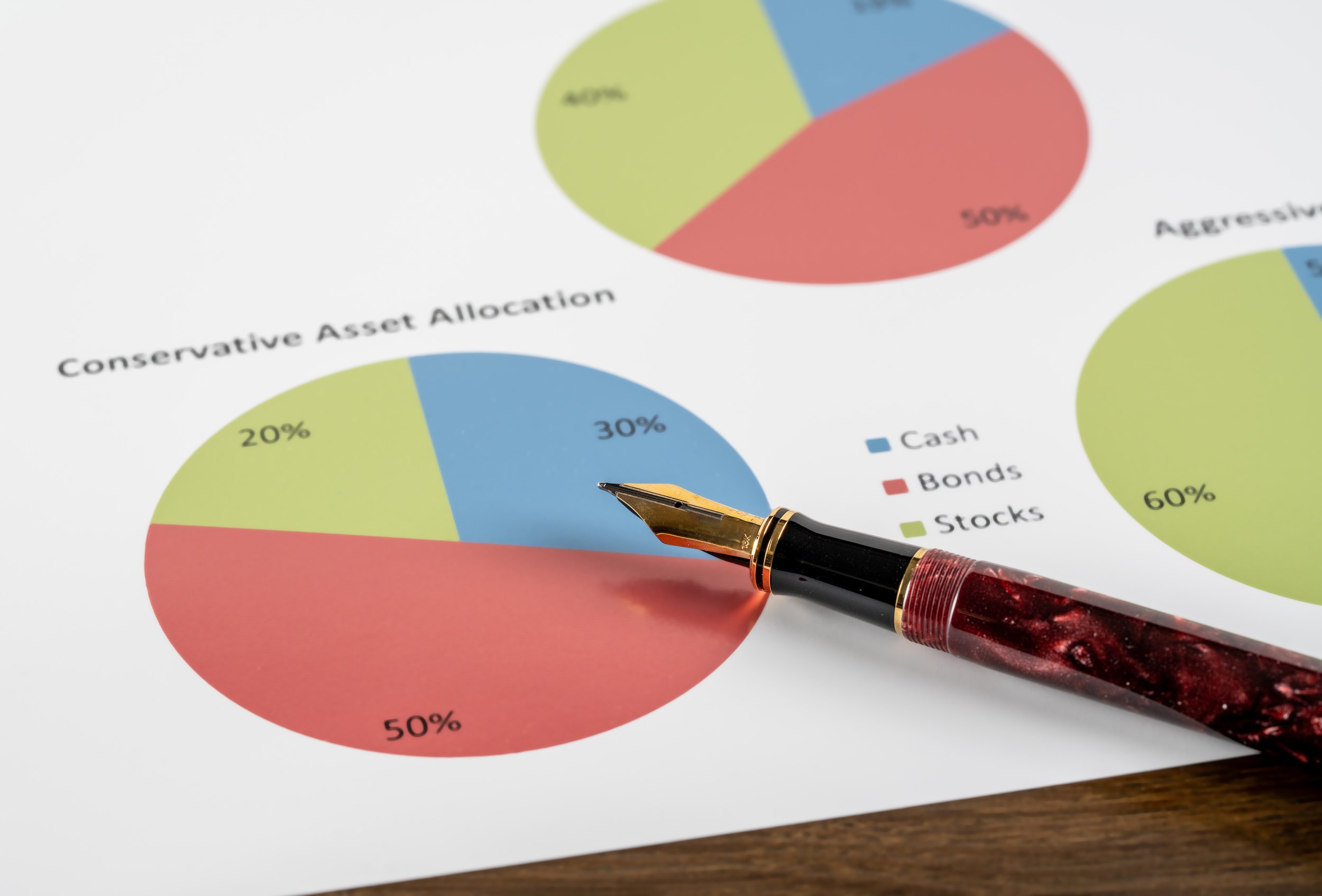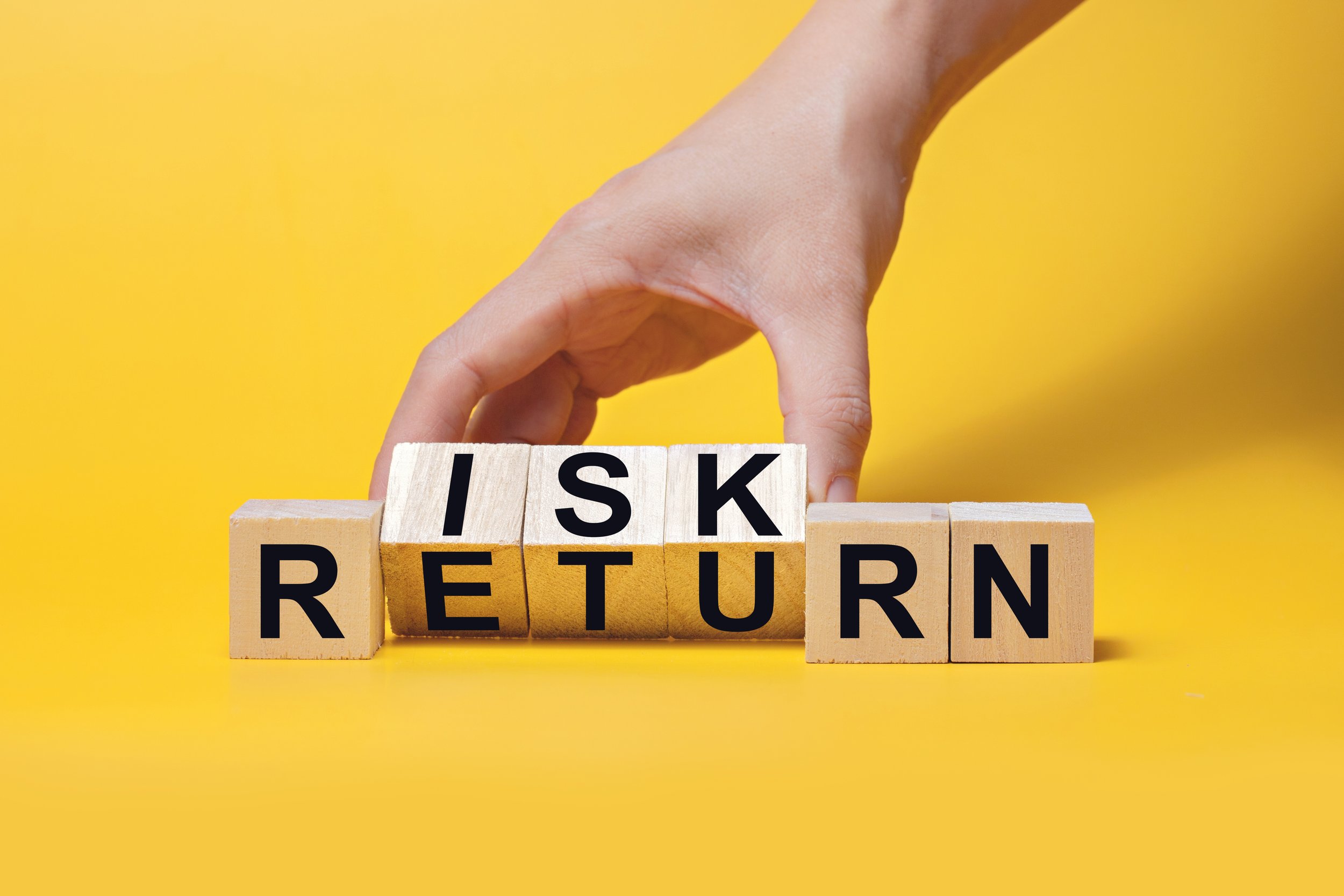What is the Ideal Asset Allocation in Retirement?
What is asset allocation? How should you approach that while saving for retirement? What about during retirement? Deciding how to invest your assets is incredibly important for the future success of your investment portfolio. Throughout this blog, I’m going to break down your diversification options and give you my take on how to best invest for a successful retirement!
Key Takeaways:
· What is an asset allocation?
· Deciding which asset allocation is right for you
· Exploring your risk tolerance
· Steps needed to create a diversified asset allocation
What is an asset allocation?
Asset allocation is one of the most important decisions that investors need to make. Your asset allocation will have a large impact on the outcome of your investment portfolio, either positively or negatively. Let’s start with what asset allocation means. If you Google asset allocation then you will see a variety of answers, but the simplified answer is that it is how you divide your portfolio amongst various assets classes including stocks, bonds, and cash to manage the risk in your portfolio.
The classic relationship between risk and reward is the more risk you are willing to take, the greater the potential reward. The risk asset classes to choose from when creating your asset allocation include stocks, real estate, and commodities while the conservative asset class are bonds and cash. Therefore, the larger proportion of risk assets in your portfolio, the larger the potential reward and vice versa. No one knows how the markets are going to perform because performance fluctuates each year, which is why investing in multiple risky asset classes can reduce the risk of your portfolio while smoothing your portfolio’s annual return. This is not to be confused with diversification, which I will briefly cover next.
Asset allocation is the breakdown of your portfolio into different asset classes, while the diversification of your investments is how you allocate those funds within each asset class to reduce risk. For example, you should have a spread of large, mid, and small cap stocks spread throughout multiple industries in the stock portion of your portfolio. This would limit your idiosyncratic risk which can be understood as stock specific risk. If you invested all your money into AMZN and they got sued, then your portfolio would experience large losses. To contrast, if you were diversified among several large cap stocks, then the overall losses from the AMZN lawsuit would be negligible.
Deciding which asset allocation is right for you
There are several strategies that you can use to determine which asset allocation is best for you. A basic rule of thumb that many follow is to take your age and subtract it from 100, whatever is left is what should be invested in stocks and other risk assets. Using said strategy, if you were 65 years old then it would indicate that you should have 35% of your portfolio invested in stocks. However, the large issue with this strategy is that it doesn’t account for other factors that are important in determining your allocation. One being inflation, which can be one of the greatest threats to a successful retirement.
An individual who is expected to live another 25-30 years with a 35% risk asset allocation is unlikely to keep pace with inflation considering inflation has been over 7% throughout the past year. That 65% of your portfolio invested in bonds and cash is not going to come close to keeping up with inflation, which is the issue with having a low allocation in risk assets. Therefore, changes to the formula have been made in recent years where individuals now subtract from 120 instead of 100. Using the scenario above, the same 65 year old would now have a 55% allocation in risk assets increasing their potential to keep pace with inflation to secure a comfortable retirement.
It is challenging to determine the correct allocation of bonds for an individual’s portfolio because bond returns are highly dependent on where interest rates are at. Throughout the past five years we have experienced low interest rates, but they have started to rise as the Fed attempts to curb inflation. Regardless, a CD offering 1% cannot keep pace with inflation of 5%, or in today’s context, a CD offering 2.25% cannot keep pace with inflation of 7%. Either way, the individual is going to experience decreased purchasing power on the money they have invested in bonds. Therefore, bonds are useful for minimizing the fluctuations in your portfolio, but are often unsuccessful in keeping pace with inflation, so you must ensure that you don’t over-allocate bonds in your investment portfolio.
As mentioned prior, there are more factors that should be considered when determining your asset allocation. Two of the most important factors include time horizon and risk tolerance. Generally, the longer the time horizon that you have, the more risk that you should take. It has already been discussed, but the reason for this is due to inflation as you want your portfolio to keep its purchasing power long-term. The other reason is that your portfolio will have more time to recover if you experience a market decline such as a bear market or recession. If someone with a short time horizon and high stock allocation were to get caught in one of these events, then the withdrawable income from their investment accounts would be limited causing a strain on their income.
Exploring your risk tolerance
Everyone is comfortable with different amounts of fluctuation in their portfolio. There are people that lose sleep over large declines in their portfolio, while others can stomach it. You must know yourself and one of the best ways to do that is to analyze how you have reacted to large fluctuations in your portfolio thus far. When you retire, you will have the largest accumulation of assets you’ve ever had in your life because you’ve been saving up for a long time to provide for you throughout retirement. Therefore, if you were sensitive to past fluctuations in a smaller portfolio, then you should target a lower risk portfolio because these funds are likely crucial to a successful retirement.
Let’s review a few examples, the three major stock declines in the past 20 years took place from 2000-2002, 2008-2009, and February of 2019. Stock market declines don’t always repeat themselves but remembering how you reacted to these in the past would be useful. The 2008-2009 decline was not only the largest, but it also took the longest to recover from. I created an excel sheet that looks at different asset allocations from this period and put them together using an S&P 500 index fund and a total market bond fund.
If you had a 100% stock portfolio, the maximum decline would have been about 44%. Therefore, if you had $1,000,000 in your investment portfolio then you would have seen a loss of $440,000 and a balance of $540,000. Additionally, if you had an all stock portfolio then you would have had a 1% lower return per year for the 10-11 years after the decline. To contrast, if you had a portfolio composed of 80% stocks and 20% bonds, then you would have experienced a decline of about 25%. While the most common allocation for people going into retirement of 60% stocks and 40% bonds would have seen a 35% decline. Therefore, I chose the worst decline because I want you to understand that it could happen again, and I want you to be prepared in case it does.
You could also determine how much income you need in retirement. For example, let’s say you had $1,000,000 in retirement assets and you take out $40,000 a year in income from your portfolio. You could consider setting aside at least five years of income, about $200,000, and keeping that in cash and bonds. I picked five years because on average it takes four years to recover after a large stock decline, so that would give you five years before you’d have to sell any of your stocks to provide that $40,000 yearly income. That should allow enough time for the stocks to at least recover to pre-decline price levels so you wouldn’t have to sell that stock at a discount.
Steps needed to create a diversified asset allocation
The first step to creating a diversified asset allocation is to first understand how you are currently invested. This could be accomplished by taking all your investment portfolios, and adding up the value of stocks, bonds, and cash in each. From there you can divide the totals, for example the total value of stocks, by the total value of your portfolio to come up with a percentage. Most 401k’s will assist you in this process by listing your current allocation for the account on the first or second page of your statement. You would still need to add up the total value of stocks, bonds, and cash and divide it by your total portfolio value, but it would save you some time. If you are unsure or would like assistance, then a financial planner would be a great resource.
The next step would be to figure out what your ideal asset allocation would be. We have covered several things to consider during this process, but another resource would be a risk tolerance questionnaire. Certain 401(k) providers offer a risk tolerance questionnaire so I would recommend asking if they have one, if not there are several free versions online. You can check out the Vanguard risk tolerance questionnaire here. One issue I have seen with my clients over the past 20 years is that they fill out the questionnaire at different times, let’s say one when the market is up and another when the market is in decline, so they come up with different results. Therefore, you should keep that in mind when filling it out because these emotions can skew your results.
Additionally, there are some great books about asset allocation that I would recommend. The first is call The Investment Answer by Dan Goldie and Gordon Murray. The Investment Answer uses 5 primary questions to help guide the reader to make the right investment choices in their own portfolio. It would be a great read for anyone unsure of their target allocation, and how to approach it. The other book that I would recommend is called Simple Wealth and Inevitable Wealth by Nick Murray. This book clearly explains the risk-reward tradeoff of owning stocks and the overall wealth-building process which would be good for younger investors. Either of these books can likely be found at your local library or used online for discount prices.
If you are interested in listening to a podcast that would build on the topics discussed above, then I would suggest my podcast, Should I Own Individual Bonds or a Bond Mutual Fund? Ep #98.


